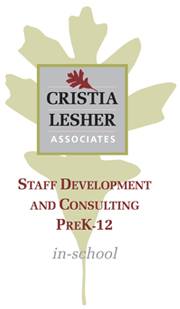How you can avoid power struggles with your students
Date: March 28th, 2013
By: Polly Bath
Last month I wrote about watching one of my colleagues, Miss Hardy, a marvelous teacher, make four mistakes in a row when managing the behavior of Sylvie, a difficult student if there ever was one. Don’t take the bait*
In the beginning, it was a matter of Miss Hardy running into Sylvie in the hall when Sylvie should have been in class. All Miss Hardy needed to do was say, “Hello, it’s nice to see you. Get on to class now.” And just keep walking.
Instead, Miss Hardy made one of the most common mistakes I see when a colleague is managing behavior. She asked a question.
“Where are you supposed to be?”
It’s a logical question, but I would have told her I NEVER ask a question when managing behavior. Why? Because sometimes I get an answer I don’t like! Which is what happened to Miss Hardy when Sylvie was rude, mocking, and disrespectful. Miss Hardy now had two behaviors to manage—the original problem plus the inappropriate response to her question.
And now Miss Hardy also had to manage herself because, understandably, she felt attacked and insulted by Sylvie’s rude response. Since everything Miss Hardy did after that was in response to those emotions, her interaction with Sylvie escalated into a power struggle.
Fact: nobody wins when a student and a teacher get into a power struggle.
Fact: it takes two to struggle. If the adult stays composed there is no power struggle—instead there is a student making poor choices and there is a calm adult.
Fact: a power struggle is worse than useless when it comes to helping students learn how to make better behavior choices.
I will never claim that it’s easy to avoid power struggles in these situations, or that doing so ever becomes second nature. Even after years as a teacher and behavior consultant, I still have to make a conscious effort. But it can be done.
For starters, when someone is rude and abrasive, I have to understand that the first thought that comes into my head really doesn’t have anything to do with them. Nick Long and others have a term for these knee-jerk thoughts we all have: Automatic Thoughts.
Nick Long would say my Automatic Thoughts can be positive or they can be negative, but they are the result of my past, not my present. And it’s in response to the Automatic Thought itself, not the present situation, that I have an emotional response. It’s worth repeating that last sentence. It is in response to the Automatic Thought itself, not the present situation, that I have an emotional response.
When a student gets in my face, my Automatic Thought tends to be indignant or aggressive. If I act on them, my behavior is going to be indignant or aggressive.
Commence the power struggle!
So, for me, the first step in managing student behavior is to manage myself.
This is what I do.
Stop. Yes, as simple as that. I make myself stop before I say a single word. If I want to maintain control of the situation, I have to stop and give myself time to…
Think. I want to block my Automatic Thought, be it anger, hurt, or indignation. So I do what I call self-talk. In my head I say, “Polly, talk to me, talk to me.” This is my personal signal to myself to do two things: block my Automatic Thought and then change it. Perhaps Miss Hardy was thinking, “Who does this Sylvie think she is? She isn’t going to talk to me like that!”
In Miss Hardy’s shoes I would say things to myself like, “Maybe Sylvie hasn’t had many positive interactions with adults in authority and her only learned response is defense. She doesn’t have the skills I have. Maybe she needs us to teach her, or she will have run-ins with authority all her life.” I might even think, “Poor Sylvie, I wish she knew how to get her needs met; she probably has some lovely qualities.”
My self talk helps me to lower my defenses and, most importantly, to not take it personally! It’s never about me! And it wasn’t about Miss Hardy. Sylvie was acting like that because it’s the only way she knows how to handle authority.
Blocking my Automatic Thought and creatively changing my thinking allows me to…
Stay Calm/Maintain Control. When I change my thoughts, my emotions change. Even though a tough student like Sylvie might be smirking and looking very defiant, I myself am in a quiet place. It is in this state of mind that I make the best possible decisions about how to respond to the Sylvies in our schools.
Finally, once it’s all over, no matter what choices the student may have made, I…
Give Myself a Very Big Pat on the Back. No kidding. I commend myself for maintaining dignity and control in a tight moment. I move on with my day and let myself feel really good about handling a situation that could have easily escalated and reinforced a student’s poor behavior choices—in this case, Sylvie’s technique for gaining attention the wrong way.
I’d love to hear how you make out applying my four steps. Let me know, won’t you? You can email me at [email protected].
Polly Bath’s articles are about real people and real situations. Changes are made sufficient to protect everyone’s privacy. A veteran educator, she is a behavior consultant, trainer, author, and keynote speaker in the United States. Read more information on Polly Bath’s in-school workshops, consultations, summer institutes, and keynotes. And contact us to make arrangements for her to come to your school.


